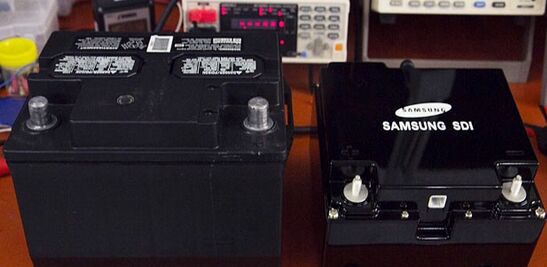After nearly a decade of research, a battery innovation future is expected to be used in traditional cars.
This article refers to the address: http://

After the joint development of Ford and Samsung SDI, the current non-hybrid models of Ford will use the driving technology of hybrid vehicles to improve fuel economy. The technology research cycle lasts for ten years, and the lithium battery of the lead battery of the traditional automobile is equipped with the function of regenerative braking.
On hybrid models, the regenerative braking system can recover 95% of the energy when the driver's foot brakes. This technology is combined with Ford's automatic start-stop device. When the car is stopped, the engine will automatically stop running to save energy. The Ford official said that 70% of Ford's entire line of models has been added to the automatic start function.
Ted Miller, senior manager of Ford Energy Storage Strategy Research, told the author, "This dual-battery system can maximize the hybrid potential of the car while saving more energy. Although the technology is still under study, Such a battery can significantly reduce carbon dioxide emissions in the short term."
In the end, Ford and Samsung SDI's goal is not only to standardize hybrid technology, they also hope to replace all lead batteries in the car with ultra-light lithium batteries in the future.
Mike O'Sullivan, head of automotive battery systems research at Samsung SDI North America, said in a statement that lithium batteries have higher energy densities than any other battery, so it's ideal for automotive use.
This ultra-light lithium battery is 40% lighter than a normal lead battery. The batteries used in Ford hybrids are now 25%-30% smaller than the nickel metal hydride batteries used in the original hybrid cars.
By 2025, all US-sold light cars will have fuel economy targets of 23 kilometers per liter (54.5 miles per gallon). Ford is also accelerating the use of new technologies and materials to reduce the weight of the car, thereby reducing the fuel consumption of its car and truck products.
In the all-electric vehicle sector, Ford has entered into a partnership agreement with the University of Michigan to build a battery lab for $8 million to develop smaller, lighter, and lower-cost automotive batteries. In 2012, Ford invested a total of $135 million in the development of battery components and aims to improve battery testing capabilities. Although Ford is still very interested in lithium batteries, its official said that it will turn its attention to other chemical battery fields in the future.
Other researchers, such as Rice University, hope to increase the energy density of lithium batteries through the use of innovative materials, which will eventually be used in all-electric vehicles. But be aware that some of the very contacted research results may not come from the laboratory. Tesla plans to invest 5 billion US dollars to build a "Gigabit factory", hoping to reduce the current cost of lithium-ion batteries for vehicles by 30% by 2020.
Disinfection lamp,High Quality Disinfection lamp,Disinfection lamp Details, CN
ZHONGSHAN G-LIGHTS LIGHTING CO., LTD. , https://www.glightsled.com